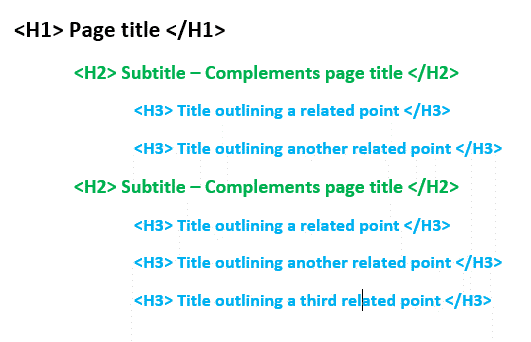In today’s discussion, we’ll delve into the art of crafting SEO-friendly content that not only engages your audience but also ranks well in search engines. Understanding the fundamentals of SEO content creation is essential for anyone looking to improve their website’s visibility online.
Why SEO-Friendly Content is important…
When we talk about SEO-friendly content, we’re referring to content that’s optimized to perform well in search engine results pages (SERPs).
Why does this matter? Because higher rankings mean more organic traffic and a greater chance to connect with your target audience.
Please keep in mind: Optimize your site primarily for users, not for computers (search engines). This is important.
Keyword Research and Usage
One of the cornerstones of SEO content creation is effective keyword research. By identifying the right keywords, you can tailor your content to match what your audience is searching for. Here’s how to do it:
- Begin with keyword research tools.
- Find relevant keywords with a balance of search volume and competition.
- Incorporate keywords naturally into your content, avoiding keyword stuffing.
Remember, user intent is crucial. Create content that answers the questions and meets the needs of your target audience.
![]() We wrote a tutorial about this here: How To: SEO Keyword Research (Beginner's Guide)
We wrote a tutorial about this here: How To: SEO Keyword Research (Beginner's Guide)
Your Websites’ Heading Structure
Properly structuring your content with headings (H1, H2, H3) is not only good for readability but also for SEO. Headings help search engines understand the hierarchy and importance of your content. Here’s how to do it:
- Use H1 for your main title (like we did here).
- Organize your content with H2 and H3 subheadings.
- Make sure headings are descriptive and relevant to your content.
How it has to look like:

MOST IMPORTANT: Content Quality and Readability
Quality is the #1 thing you need to focus on. Your content should be informative, engaging, and valuable to your readers. Additionally, pay attention to readability factors such as sentence length, paragraph structure, and the use of bullet points and lists.
Internal and External Linking
Linking is another essential aspect of SEO-friendly content. Internal links help users navigate your website, while external links to reputable sources can boost your content’s credibility. Here are some tips:
- Include relevant internal links to other pages on your website.
- Cite external sources when necessary to support your claims.
Content
Length & Depth
While there’s no one-size-fits-all answer, content length matters. In some cases, longer, in-depth articles perform better in search results. However, the focus should always be on providing value. Find the balance that works for your audience and topic.
BUT: There is no 100% solution for this. Content can vary from texts, to eBooks or audios and videos.
Use Multimedia
Enhance your content with multimedia elements like images, videos, and infographics. These not only make your content more engaging but can also boost its SEO potential. Don’t forget to optimize images with descriptive alt text.
Don’t copy & paste
… That’s “duplicate content” and won’t help your SEO rankings. You won’t achieve anything by copying. Keep your content fresh and relevant by revisiting and updating older articles. Google loves up-to-date content, and it can help maintain or improve your rankings.
In conclusion, writing SEO-friendly content is a combination of art and science. By understanding the principles of SEO, conducting keyword research, optimizing headings, focusing on quality and readability, and following best practices for linking and multimedia, you can create content that not only ranks well but also engages and converts your audience.
We encourage you to share your thoughts, questions, or experiences related to writing SEO-friendly content. Have you encountered any challenges or successes in your content creation journey? Let’s discuss and learn from each other!
For further learning, check out these additional resources on our forum:
Thank you for being part of our SEO community! Stay tuned for more valuable insights and discussions.
Checklist - SEO-Friendly Content
Click here to check our Checklist for High Quality Content
Content Quality Checklist:
1. Clear Purpose:
 Does the content have a clear and specific purpose?
Does the content have a clear and specific purpose? Is the main message or goal of the content evident?
Is the main message or goal of the content evident?
2. Audience Understanding:
 Have you considered your target audience’s needs, interests, and pain points?
Have you considered your target audience’s needs, interests, and pain points? Does the content address questions or problems your audience may have?
Does the content address questions or problems your audience may have?
3. Originality:
 Is the content original and not copied or duplicated from other sources?
Is the content original and not copied or duplicated from other sources? Does it provide a unique perspective or valuable insights?
Does it provide a unique perspective or valuable insights?
4. Comprehensive Coverage:
 Does the content cover the topic comprehensively, leaving no critical questions unanswered?
Does the content cover the topic comprehensively, leaving no critical questions unanswered? Have you addressed various aspects or subtopics related to the main topic?
Have you addressed various aspects or subtopics related to the main topic?
5. Clarity and Readability:
 Is the content easy to read and understand?
Is the content easy to read and understand? Are sentences and paragraphs concise and well-structured?
Are sentences and paragraphs concise and well-structured? Have you used headings, bullet points, and lists to improve readability?
Have you used headings, bullet points, and lists to improve readability?
6. Grammar and Spelling:
 Have you proofread the content to ensure there are no grammatical or spelling errors?
Have you proofread the content to ensure there are no grammatical or spelling errors? Is the language appropriate for your target audience?
Is the language appropriate for your target audience?
7. Engaging Introduction:
 Does the content start with a captivating introduction to grab the reader’s attention?
Does the content start with a captivating introduction to grab the reader’s attention? Is the introduction relevant to the topic and purpose of the content?
Is the introduction relevant to the topic and purpose of the content?
8. Value and Relevance:
 Does the content provide valuable information, insights, or solutions?
Does the content provide valuable information, insights, or solutions? Is it relevant to the needs and interests of your audience?
Is it relevant to the needs and interests of your audience?
9. Visual Elements:
 Are images, videos, infographics, or other visual elements used to enhance the content?
Are images, videos, infographics, or other visual elements used to enhance the content? Are visuals properly credited and optimized for web use?
Are visuals properly credited and optimized for web use?
10. Proper Citation:
 Have you cited external sources or references when using data, quotes, or research findings?
Have you cited external sources or references when using data, quotes, or research findings? Is there a clear distinction between your original content and sourced information?
Is there a clear distinction between your original content and sourced information?
11. Engagement and Call to Action (CTA):
 Does the content encourage reader engagement, such as comments, shares, or feedback?
Does the content encourage reader engagement, such as comments, shares, or feedback? Is there a clear and relevant call to action (CTA) if applicable?
Is there a clear and relevant call to action (CTA) if applicable?
12. Mobile-Friendly Design:
 Is the content responsive and accessible on various devices, including mobile phones and tablets?
Is the content responsive and accessible on various devices, including mobile phones and tablets?
13. SEO Optimization:
 Have you conducted keyword research and integrated relevant keywords naturally?
Have you conducted keyword research and integrated relevant keywords naturally? Is the content structured with proper heading tags (H1, H2, H3) for SEO?
Is the content structured with proper heading tags (H1, H2, H3) for SEO?
14. Regular Updates:
 Is the content periodically updated to ensure accuracy and relevance over time?
Is the content periodically updated to ensure accuracy and relevance over time? Are outdated or irrelevant sections removed or revised?
Are outdated or irrelevant sections removed or revised?
15. User Experience:
 Is the content easy to navigate, with a clear table of contents or internal links if necessary?
Is the content easy to navigate, with a clear table of contents or internal links if necessary? Have you considered page load speed and performance for a smooth user experience?
Have you considered page load speed and performance for a smooth user experience?
16. Legal Compliance:
 Does the content adhere to copyright laws and licensing agreements?
Does the content adhere to copyright laws and licensing agreements? Are any legal disclaimers or disclosures included when necessary?
Are any legal disclaimers or disclosures included when necessary?
17. Analytics and Measurement:
 Do you have a way to track the performance of the content using analytics tools?
Do you have a way to track the performance of the content using analytics tools? Are you monitoring metrics such as page views, engagement, and conversions?
Are you monitoring metrics such as page views, engagement, and conversions?

